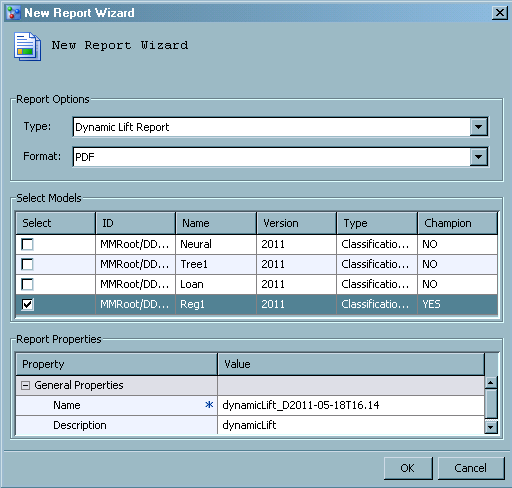Creating Dynamic Lift Reports
About Dynamic Lift Reports
The Dynamic Lift report
enables you to view a model's lift at a given point in time or to
compare the lift performance of several models on one chart. The Dynamic
Lift report creates the following charts:
The charts that are
created for a Dynamic Lift report are also created in the Monitoring
Report, which creates multiple types of model comparison reports.
Verify Project and Model Property Settings
Verify Project Properties
Select the project name
and verify that the following project properties are set:
Specifies a test table
that is listed in the Test Tables data source.
The test table must contain the target variable, as well as values
for the variables that are defined by the project input variables.
Verify Model Properties
For each model in the
Dynamic Lift report, click on the model name and verify the specified
properties on the following tabs:

